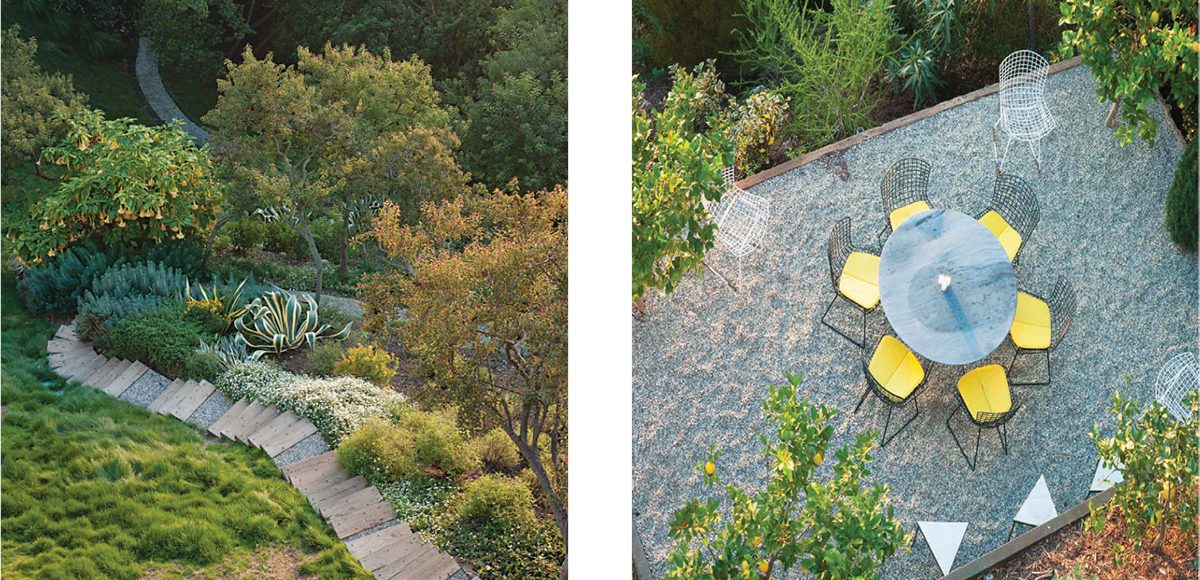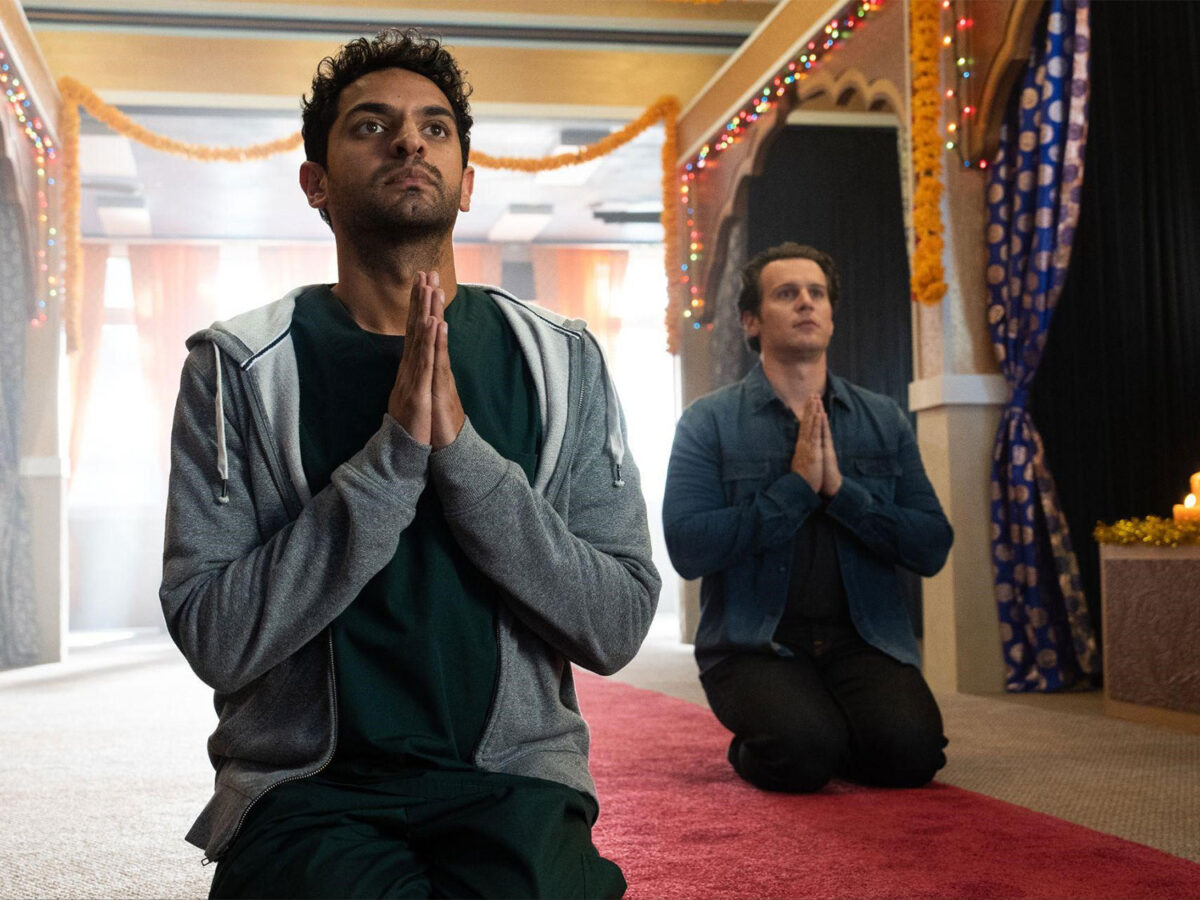Also by John Lambert Pearson
In this issue, the Courier is pleased to present the first of a multi-part series by Mark Rios, FAIA, FASLA and John Lambert Pearson, ASLA. Rios is founder and Creative Director of RCH Studios, a multi-disciplinary design practice based in Los Angeles. Rios launched the firm in 1985 with a singular vision: to imagine, design, and build complete environments. Under his leadership, RCH Studios has become renown for its groundbreaking, multidisciplinary approach to commissions. John Lambert Pearson is Senior Project Designer at RCH Studios. He is known for combining his extensive horticultural expertise with an avid interest in the social and cultural factors of design to realize his client’s visions. In a recent collaboration on a significant residential landscape project, Rios and Pearson recognized that they had much to share with urban dwellers about how to shape their home gardens. This piece and those that follow will convey their passion for the power of gardens and provide expert tips in transforming home gardens into beautiful and uplifting sanctuaries.
If you’re working from home like we are these days, you likely are wondering why you’re stuck taking conference calls at your computer when you would much rather be sitting outside enjoying a cappuccino. Now that our connection to nature has been limited mostly to our homes due to COVID-19, many people are rediscovering an asset they may have been overlooking for years – their GARDENS. Houses get remodeled every ten years or so, but you also need to remember to refresh your garden.
How would you rate your current relationship with your yard?

If things are looking rocky, proverbial or otherwise, it may be time to remodel your garden. Ask yourself, what purpose is your yard serving? We use our gardens like we would any other room in the house. They are private, useful, hopefully attractive, and serve our needs by making our lives more peaceful, more balanced, and provide a great place for social distancing. Gardens are proven to ameliorate our mood and even our health. There is something magical about watering plants and watching them grow. Gardens are places for relaxation, meditation, play, entertainment. Everything that happens in a garden should be enjoyable.
Happiness in the garden comes from finding a design that adds as much beauty as possible while at the same time eliminating as many problems or irritations as you can manage. If you find yourself more troubled than entertained by your garden, it may be time to reassess and redesign. DO NOT BE INTIMIDATED. Transforming your garden can be as easy or as onerous as you want to make it. There are no set rules, no mysterious “must-dos,” no lawmaker who will appear out of the sky to admonish you for not following what is expected of you.
Here are seven steps to remodeling your garden:
1) What is your garden’s purpose for being?
A garden is an expression of its owner’s imagination and fantasies. Take a long look at your garden and analyze what you really want from it, disengaged from whatever you have been told constitutes a garden. What is this place really all about? What is the story of your garden?
2) Evaluate your place.
What do you have that is great in your garden? If you have a favorite spot in your yard, this is a good place to start. What do you like about it? A certain tree, a view, a place you like to relax, a spot of sun in between the canopy. These simple scenes can be more than enough to help focus a garden design. Keep the good, edit the superfluous.
3) Dream big.
Your garden needs a topic sentence. What could this garden be? A safe haven for your family, a space for entertaining, a vision from your past, a secret fantasy? Perhaps there is a theme that defines your garden. Once you have made a decision, write down one sentence that holistically describes your dream garden.
4) Watch carefully.
Evaluate your microclimate. Stand in your garden at several different points of the day and utilize all your senses. Listen for sounds, observe sun and shade patterns, take note of any birds or butterflies that visit. How much room do you actually have? Our goal here is to fit your dream into an actual place.
5) Learn about plants.
Visit a nursery (note that many have moved online already). Take a walk in your neighborhood and take pictures of plants you like and think about why you like them.
Buy a book – “Sunset Western Garden” or “California Native Plants for the Garden” are two great places to start when selecting plants. If you are intimidated by plants, we’ll help you to get over your fear, but we need another article for that – stay tuned.
6) Build it.
If you can manage, build your garden yourself. You may need to involve a gardener, landscape contractor, or a landscape architect if your vision requires more complex interventions. Regardless of the route you take, make sure you build or plant a portion of the garden so you can claim it for your own.
7) Accessorize.
Bring objects you love into your garden. Just as you would bring beautiful flowers from your garden into your home, bring something you cherish outside. A chair, a bowl, an artifact with a story attached to it. Personalize this space to make it uniquely yours.
Now that you have moved your way through our seven steps you may assume you are done. But gardens take time. Part of the allure of a garden is watching it mature and mellow in its age. Take in the beauty of the garden in front of you and continue to care for it as it sprouts and evolves. Gardening can become a daily meditation; it is a humble practice that brings us “down- to-earth” and links us to the land. Reconnect with your new garden, and a year from now, come back and take this quiz.
How do you feel about your garden now?








